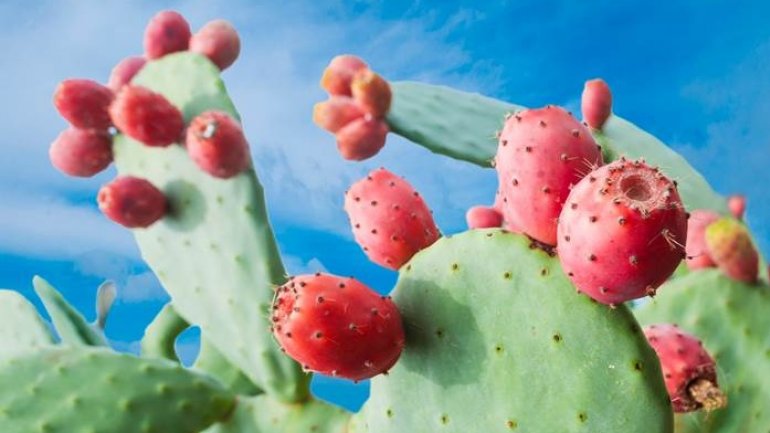FAO believes cactus to be a valuable food, forage and water source during droughts
 foto: fao.org
foto: fao.org
Cactus pear should be considered as a valuable asset, especially for food and livestock feed in dryland areas, wrote fao.org
FAO gathered experts on the hardy plant to pool their knowledge in a bid to help farmers and policy makers make more strategic and efficient use of a natural resource too often taken for granted.
During the recent intense drought in southern Madagascar, cactus proved a crucial supply of food, forage and water for local people and their animals. The same area had once suffered a severe famine as the result of efforts to eradicate the plant, which some saw as a worthless invasive species. It was quickly reintroduced.
While most cacti are inedible, the Opuntia species has much to offer, especially if treated like a crop rather than a weed run wild. Today the agriculturally relevant Opuntia ficus-indica subspecies - whose spines have been bred out but return after stress events - is naturalized in 26 countries beyond its native range. Its hardy persistence makes it both a useful food of last resort and an integral part of sustainable agricultural and livestock systems.
To spread knowledge of how to manage the cactus pear effectively, FAO and ICARDA launched Crop Ecology, Cultivation and Uses of Cactus Pear, a book with updated insights into the plant's genetic resources, physiological traits, soil preferences and vulnerability to pests. The new book also offers tips on how to exploit the plant's culinary qualities as has been done for centuries in its native Mexico and is now a well-entrenched gourmet tradition in Sicily.
"Climate change and the increasing risks of droughts are strong reasons to upgrade the humble cactus to the status of an essential crop in many areas," said Hans Dreyer, director of FAO's Plant Production and Protection Division.
Cactus pear cultivation is slowly catching on, boosted by growing need for resilience in the face of drought, degraded soils and higher temperatures.
It has a long tradition in its native Mexico, where yearly per capital consumption of nopalitos - the tasty young pads, known as cladodes - is 6.4 kilograms. Opuntias are grown on small farms and harvested in the wild on more than 3 million hectares, and increasingly grown using drip irrigation techniques on smallholder farms as a primary or supplemental crop.
Today, Brazil is home to more than 500,000 hectares of cactus plantations aimed to provide forage. The plant is also commonly grown on farms in North Africa and Ethiopia's Tigray region has around 360,000 hectares of which half are managed.
The cactus pear's ability to thrive in arid and dry climates makes it a key player in food security.
Apart from providing food, cactus stores water in its pads, thus providing a botanical well that can provide up to 180 tonnes of water per hectare - enough to sustain five adult cows, a substantial increase over typical rangeland productivity. At times of drought, livestock survival rate has been far higher on farms with cactus plantations.
Projected pressure on water resources in the future make cactus "one of the most prominent crops for the 21stcentury," says Ali Nefzaoui, a Tunis-based researcher for ICARDA, the International Center for Agricultural Research in the Dry Areas.
Various chapters in the book explore the potential of cactus cultivation, reporting that Tunisian barley yields rise when cactus is grown alongside as a soil-improving alley crop, and noting preliminary research that suggests including cactus in cattle diets reduces the ruminants' methanogenesis, thus contributing to lower greenhouse gas emissions.
Yields of commercially grown Opuntia vary substantially according to place, cultivar and growing technique. Harvesting more than 20 tonnes of fruit per hectare is common in Israel, Italy and where irrigation is used in Mexico - a few cases of 50-tonne yields have been reported - but output is lower in most arid and rainfall-dependent locations.
The cactus pear's biological trick is a special kind of photosynthesis - crassulacean acid metabolism - that allows them to take in water during the night.
Still, there are limits. Below-freezing temperature causes irreversible damage to pads and fruit. And while the Opuntia ficus-indica can usually survive exposure to temperatures up to 66 degrees Celsius, its photosynthesis starts to slow above 30 degrees, which is why they aren't seen much in the Sahel or Mojave deserts.
- War Crime hearing postponed after suspect drank poison upon verdict
- Donald Trump retweets videos displaying anti-Muslim videos
- Ministers demand to cancel Donald Trump's visit to UK after he retweeted anti-Muslim videos
- U.S. demands Russian state-funded TV channel RT to register as foreign company
- USA urges all diplomatic and trade ties to be cut with North Korea after country's latest ballistic missile test
- New doors opened for Syrian refugees in Turkey. FAO and UNHCR offers agricultural skills training and job fairs